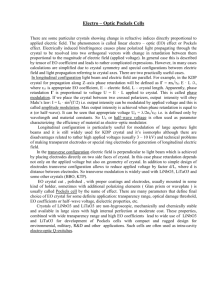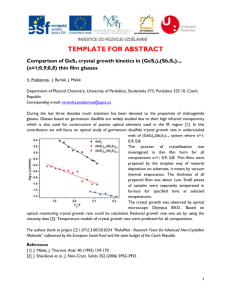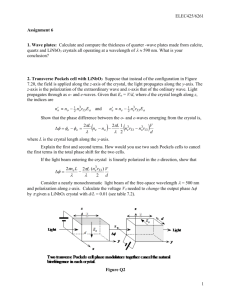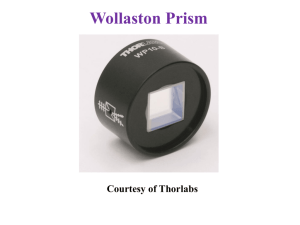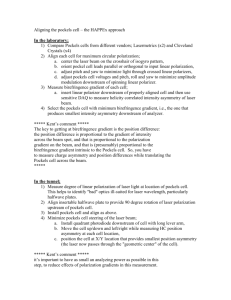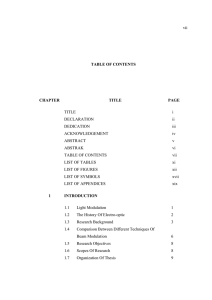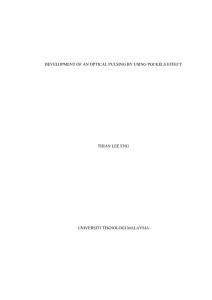WIDE – APERTURE PLASMA-ELECTRODE POCKELS CELLS
advertisement
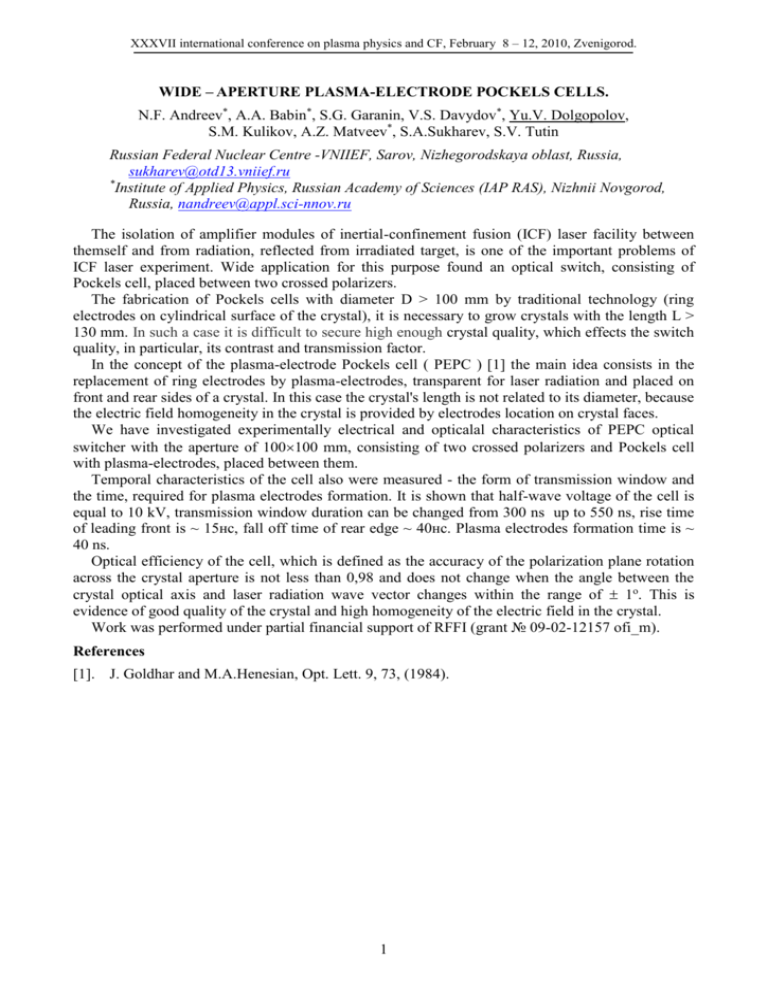
XXXVII international conference on plasma physics and CF, February 8 – 12, 2010, Zvenigorod. WIDE – APERTURE PLASMA-ELECTRODE POCKELS CELLS. N.F. Andreev*, A.A. Babin*, S.G. Garanin, V.S. Davydov*, Yu.V. Dolgopolov, S.M. Kulikov, A.Z. Matveev*, S.A.Sukharev, S.V. Tutin Russian Federal Nuclear Centre -VNIIEF, Sarov, Nizhegorodskaya oblast, Russia, sukharev@otd13.vniief.ru * Institute of Applied Physics, Russian Academy of Sciences (IAP RAS), Nizhnii Novgorod, Russia, nandreev@appl.sci-nnov.ru The isolation of amplifier modules of inertial-confinement fusion (ICF) laser facility between themself and from radiation, reflected from irradiated target, is one of the important problems of ICF laser experiment. Wide application for this purpose found an optical switch, consisting of Pockels cell, placed between two crossed polarizers. The fabrication of Pockels cells with diameter D > 100 mm by traditional technology (ring electrodes on cylindrical surface of the crystal), it is necessary to grow crystals with the length L > 130 mm. In such a case it is difficult to secure high enough crystal quality, which effects the switch quality, in particular, its contrast and transmission factor. In the concept of the plasma-electrode Pockels cell ( PEPC ) [1] the main idea consists in the replacement of ring electrodes by plasma-electrodes, transparent for laser radiation and placed on front and rear sides of a crystal. In this case the crystal's length is not related to its diameter, because the electric field homogeneity in the crystal is provided by electrodes location on crystal faces. We have investigated experimentally electrical and opticalal characteristics of PEPC optical switcher with the aperture of 100100 mm, consisting of two crossed polarizers and Pockels cell with plasma-electrodes, placed between them. Temporal characteristics of the cell also were measured - the form of transmission window and the time, required for plasma electrodes formation. It is shown that half-wave voltage of the cell is equal to 10 kV, transmission window duration can be changed from 300 ns up to 550 ns, rise time of leading front is ~ 15нс, fall off time of rear edge ~ 40нс. Plasma electrodes formation time is ~ 40 ns. Optical efficiency of the cell, which is defined as the accuracy of the polarization plane rotation across the crystal aperture is not less than 0,98 and does not change when the angle between the crystal optical axis and laser radiation wave vector changes within the range of 1о. This is evidence of good quality of the crystal and high homogeneity of the electric field in the crystal. Work was performed under partial financial support of RFFI (grant № 09-02-12157 ofi_m). References [1]. J. Goldhar and M.A.Henesian, Opt. Lett. 9, 73, (1984). 1



